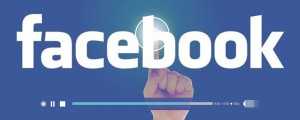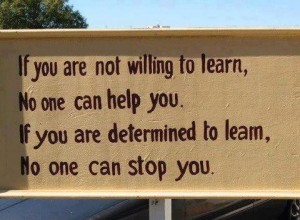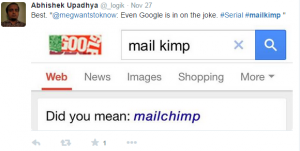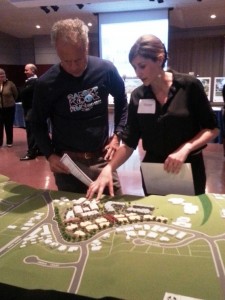by Grant Wright @grant_wright
At (W)right On, among our Values is to ‘embrace and lead change’. We keep current with and help define new best practices in communications. For example, in 2012 I wrote of smartphones surpassing PC sales for the first time and the rise of the Virtual Web. With consumption occurring from smaller and smaller screens, this has important bearing on how we might design a Client Partners’ website, for example. Jump to the present, and as I just tweeted about Apple selling 34,000 iPhones an hour, 24 hours/day for every day of the most recent quarter, we’re well on the way to a smaller-device world.
A year ago, Molly Borchers predicted six trends headed our way: pay-for-play social media, branded journalism, wearable technology and the Internet of Things, collaborative economy, anticipatory computing and super fan marketers. I’d argue she’s six for six.
So with 2015 well underway, in this first of a two-part post here are my crystal ball thoughts on how things might unfold in 2015.
Facebook ‘Dampening’
 I almost said ‘decline’ and maybe I should. As I talked about last March, with Facebook’s algorithm now rendering organic views to about 5% of the potential audience, it’s become harder for businesses to find their way onto people’s newsfeeds. For businesses that have, say, 8,000 followers yet only 300 of them interact, it’s much less worthwhile than before to invest the needed resources for good content absent a comprehensive communication strategy. A Facebook spokesperson said, “We’re getting to a place where because more people are sharing more things, the best way to get your stuff seen if you’re a business is to pay for it.” However, I think businesses will pay-for-play of Facebook posts less and less.
I almost said ‘decline’ and maybe I should. As I talked about last March, with Facebook’s algorithm now rendering organic views to about 5% of the potential audience, it’s become harder for businesses to find their way onto people’s newsfeeds. For businesses that have, say, 8,000 followers yet only 300 of them interact, it’s much less worthwhile than before to invest the needed resources for good content absent a comprehensive communication strategy. A Facebook spokesperson said, “We’re getting to a place where because more people are sharing more things, the best way to get your stuff seen if you’re a business is to pay for it.” However, I think businesses will pay-for-play of Facebook posts less and less.
This leaves non-business Facebook use, and while Facebook is a behemoth, the next generation seems less enthused about it. In his social media analysis paper, a University of Texas student sums it this way, “Facebook is something we all got into in middle school because it was cool. But now it’s seen as an awkward family dinner party we can’t really leave.”
While it may currently be the most used platform, people aren’t interacting on Facebook at the rate of other social networks. While my evidence borders on spidey sense, I think Facebook may well become a MySpace to an alternative, any alternative.
YouTube ‘Dampening’
With the proliferation of video across other platforms like Facebook that no longer require content to be hosted on Youtube, I believe the site could take a serious hit this year.
As Business Insider notes, “In November, Facebook’s share of video posts uploaded directly to Facebook  overtook YouTube’s videos on Facebook for the first time.” The upside of this is that Facebook video views drive more engagement than Youtube, but then more of something that could be on its way to a nothing (as we know it today) for a new generation still gives me pause.
overtook YouTube’s videos on Facebook for the first time.” The upside of this is that Facebook video views drive more engagement than Youtube, but then more of something that could be on its way to a nothing (as we know it today) for a new generation still gives me pause.
“Social Media Expert” Goes Dodo
My third premonition is that the title, “social media expert” will disappear as the proliferation of platforms makes it increasingly difficult to be an across the board expert. Instead, we’ll begin to see specialist experts as platform use continues to fragment and businesses become even choosier as to which platforms they expend energy. Relating to this, we may also see a resurgence of businesses strengthening their owned online presence including websites and blogs as this remains the only way to truly own one’s audience.
Increased Conversations
As 2015 progresses, brands will continue to move from thinking of social media as one-way flow toward a two- way flow and relationship building opportunity. And for reasons touched on earlier, the framework for this interaction will increasingly necessarily be through paid visibility. I hope when this happens that we see a more organic conversation between brands and their audience. This is beneficial for both parties, although it takes more commitment on the side of the brand to maintain a conversation.
way flow and relationship building opportunity. And for reasons touched on earlier, the framework for this interaction will increasingly necessarily be through paid visibility. I hope when this happens that we see a more organic conversation between brands and their audience. This is beneficial for both parties, although it takes more commitment on the side of the brand to maintain a conversation.
Facebook and YouTube dampening, specialist experts and increased conversations via paid infrastructure are among the things I see in the year to unfold. Stay tuned next week for Part Two of this post in which I see three more potential trends swirling in my ball.






















 Grant Wright
Grant Wright Corie Fiebiger
Corie Fiebiger
 Shae Geary
Shae Geary Phelan Riessen
Phelan Riessen Katrina Early
Katrina Early Hamish Marshall
Hamish Marshall